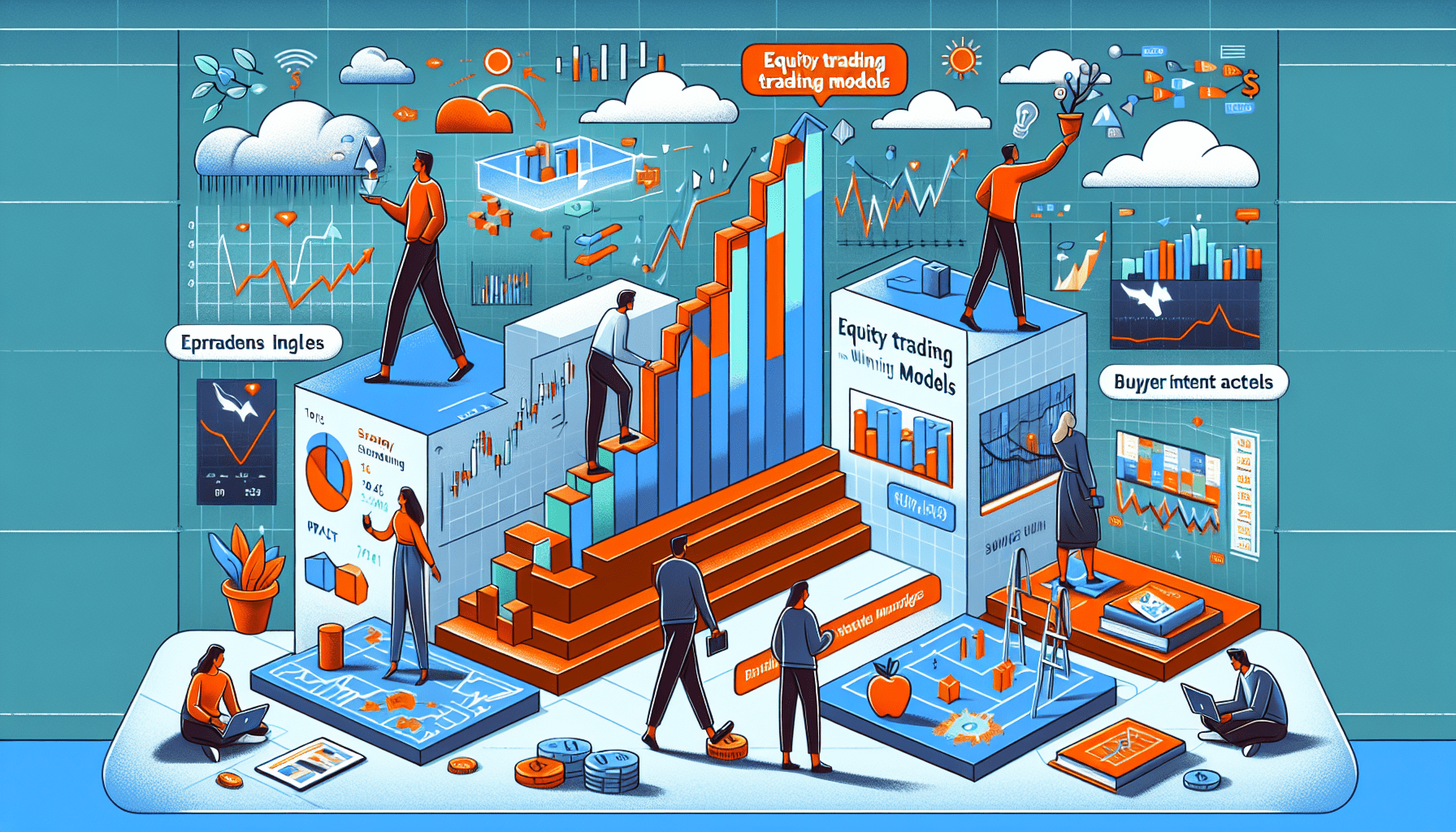Unlocking Equity Trading Models: Strategies for Success
In today’s dynamic financial markets, staying ahead means adopting the most innovative equity trading models. Whether you’re a beginner looking for the best equity trading models for beginners or a seasoned trader interested in advanced equity trading strategies for professionals, our comprehensive guide offers insights into the most effective approaches. With a strong focus on data-driven decision making, this post explores everything from stock trading algorithms to quantitative trading models that drive success in trading.
Understanding Equity Trading Models
Equity trading models are at the heart of modern trading strategies. They blend traditional techniques and innovative technology to manage risk, optimize returns, and reduce emotional trading. Investors and traders rely on these models to sift through large datasets and identify potential trading opportunities. For example, algorithmic trading models use mathematical formulas and historical data to predict price movements.
One of the key benefits of these models is their ability to remain systematic and unbiased. This is particularly meaningful when market conditions are volatile. By incorporating various factors such as market trends, volume, and historical performance, these models can suggest adjustments in your portfolio in real-time.
Diving Deeper into the Strategies
Let’s examine several popular approaches in equity trading:
- Algorithmic Trading Models: These systems automate orders based on predetermined criteria. By using stock trading algorithms, traders can execute transactions at the best possible prices.
- Quantitative Trading Models: Relying on statistical data, these models are perfect for high-precision trading environments like quantitative trading models for high-frequency trading.
- Customizable Trading Frameworks: For institutions, customizable equity trading models for institutional investors offer the flexibility to adapt to different market conditions.
Investors are increasingly turning to these technologies as they allow for frequent adjustments without emotional bias, creating opportunities even during market downturns.
Technology Meets Tradition
The integration of technology into traditional investing strategies is one of the most significant shifts in recent years. Historically, equity trading was rooted in fundamental research and intuition. Today, data-driven insights complement these methods. Many traders combine classical approaches with innovative systems to strike a balance between art and science in trading.
For instance, when you look at the evolution of trading algorithms, the progress from rudimentary models to top-performing stock trading algorithms in 2025 illustrates how technology has refined the decision-making process in financial markets.
By leveraging both advanced analytics and historical data, traders can mitigate risks while capitalizing on high-probability opportunities.
Adapting to Market Conditions
One of the most challenging aspects of trading is adapting quickly to changing market conditions. Using predictive techniques, traders can forecast potential market shifts and adjust their portfolios accordingly. Tools such as equity trading strategies and detailed market analysis help in formulating decisions even in uncertain environments.
Moreover, modern equity trading models incorporate machine learning and real-time analytics to respond to rapid market fluctuations. This ensures that whether the market is bullish or bearish, there’s a framework in place to leverage the prevailing trends.
The ability to swiftly adjust trading strategies can mean the difference between capturing short-term gains and missing out on opportunities. By using diversified algorithms, traders ensure that their portfolios remain balanced and resilient.
Case Studies and Real-World Applications
Practical application of theory often provides the best insights. Consider a case where traders combined both algorithmic trading models and quantitative trading models to achieve outstanding results during a market dip. By overlaying traditional techniques with innovative analytics, the traders were able to identify undervalued stocks and capitalize on the rebound.
Other institutions have found success by continuously refining their models. For example, a renowned financial firm recently adopted a system that merged customizable equity trading models for institutional investors with advanced data analytics. The result was improved risk management and superior trade execution, highlighting the evolving nature of equity trading.
Benefits of Data-Driven Trading
Moving from manual methods to automated, data-driven systems offers numerous benefits:
- Speed and Efficiency: Automated systems can execute operations much faster than manual methods, a critical factor in high-frequency trading environments.
- Reduced Emotional Bias: Decisions based on data rather than emotion can help avoid mistakes during volatile market conditions.
- Enhanced Risk Management: Continuous monitoring and adjustment capabilities allow for proactive risk management, ensuring that portfolios adapt to current market conditions.
- Tailored Solutions: From beginners seeking the best equity trading models for beginners to professionals in need of advanced equity trading strategies for professionals, data-driven solutions cater to diverse needs.
Using these benefits to your advantage can elevate your trading strategy significantly. By harnessing cutting-edge technology and robust models, traders can navigate even the most turbulent markets with confidence.
Looking Ahead: The Future of Trading Models
As technology evolves, so too will the tools available for equity trading. The integration of artificial intelligence and machine learning is paving the way for even more sophisticated stock trading algorithms and quantitative trading models. The pace of innovation suggests that we may soon see models that can predict market trends with even greater accuracy.
Moreover, as investment platforms continue to prioritize customization, traders can expect more options tailored to their specific needs. This trend is especially promising for those seeking customizable equity trading models for institutional investors, offering enhanced flexibility and precise targeting of investment strategies.
The future is bright for those willing to embrace change and invest in technology-driven solutions. By staying informed and leveraging the right models, traders can set themselves apart in an increasingly competitive market.
Conclusion
Equity trading models have revolutionized the way we approach investing. By combining the strengths of technology with traditional trading wisdom, these models offer a robust framework for decision making. Whether you’re looking to explore equity trading models for the first time or refine your current approach with advanced equity trading strategies for professionals, the potential for success is immense.
We hope this guide has provided valuable insights into how modern trading technologies can work for you. Stay updated with emerging trends and keep refining your models to stay ahead of the curve in the fast-paced world of equity trading.







